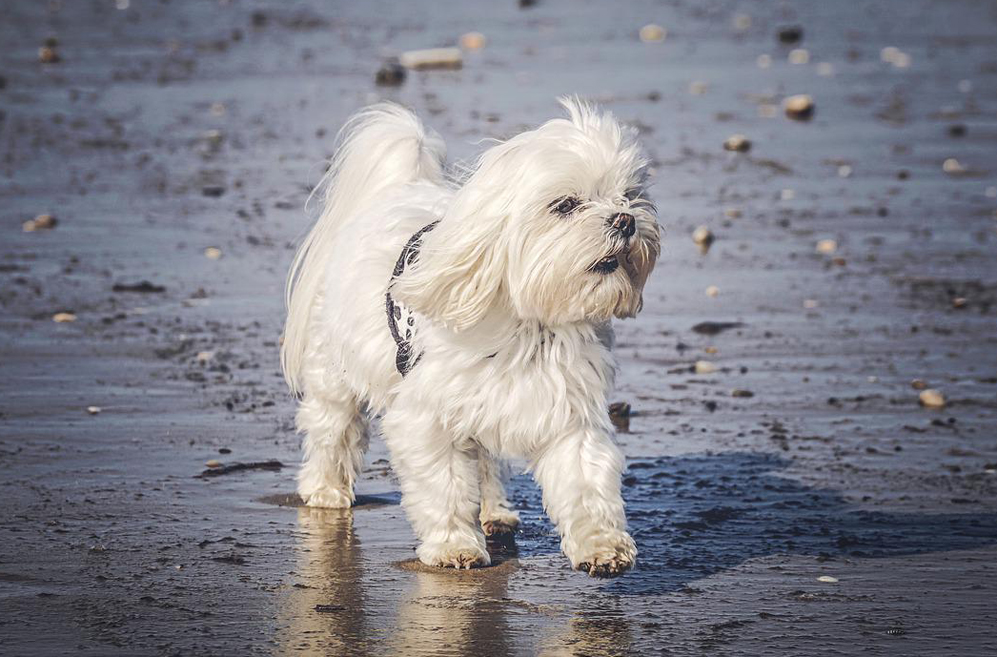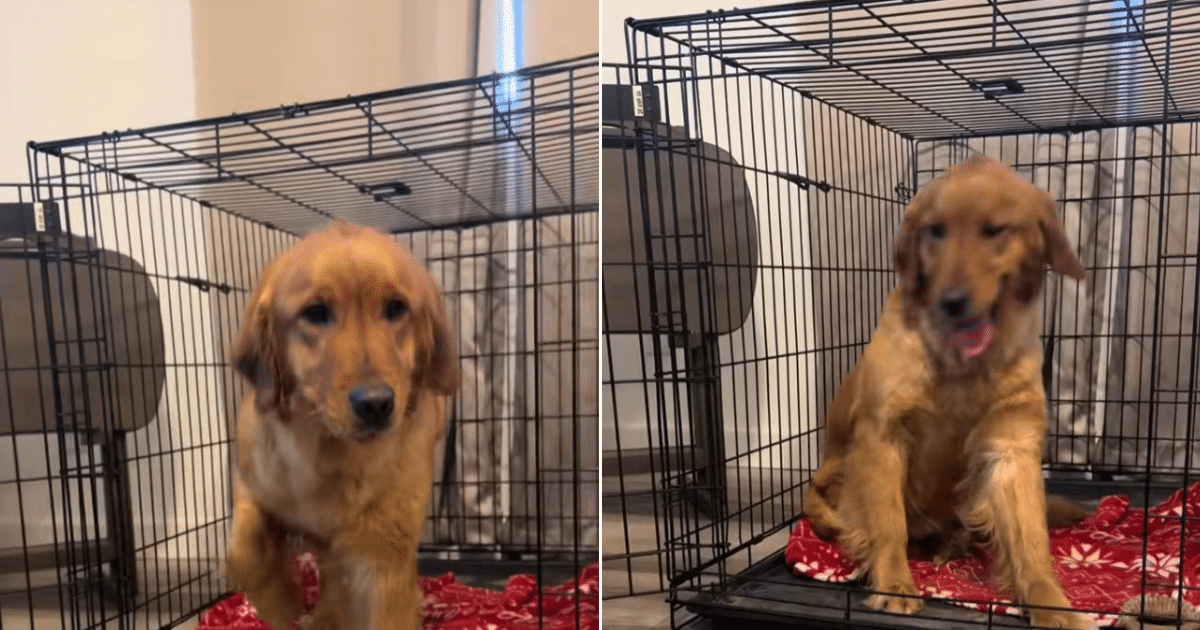Key Takeaways
- Some sushi ingredients, like plain rice or cooked salmon, are usually fine for dogs in small amounts. But many other common sushi ingredients can actually be harmful to your dog.
- Raw fish is risky for dogs because it can carry bacteria such as Salmonella or Listeria, and parasites like tapeworms, which dogs have a hard time fighting off.
- Soy sauce is not safe for dogs. Even a little bit has a lot of salt, which can lead to sodium poisoning.
- High-fat foods like mayonnaise, avocado, and fatty fish can upset your dog’s pancreas and cause pain or vomiting.
- Tuna can be a problem because it contains mercury. If your dog eats tuna often, mercury can build up in their body.
- Wasabi and spicy ingredients can upset your dog’s stomach, leading to vomiting, diarrhea, or gas.
- If you’re not sure, it’s best not to share sushi with your dog. Even a small piece can sometimes cause problems soon after eating.
Can Dogs Eat Sushi?
It’s normal to want to share your favorite foods with your dog. When your dog looks up at you while you’re eating sushi, it’s tempting to give them a bite as a treat. But even though sushi looks simple, many of its ingredients can actually be risky for dogs.
Here’s the simple answer: Most sushi is not safe for dogs. A tiny piece now and then might not make your dog sick right away, but the real risk comes after your dog eats it. Some ingredients can cause problems within hours, while others can harm your dog’s health over time. If you know which ingredients are risky and why, you can make better choices about what your dog eats.
What Makes Sushi a Concern for Dogs?
Sushi mixes together a lot of different ingredients that can be tough on a dog’s stomach. Even just one sushi roll might have raw fish, soy sauce, avocado, mayonnaise, and wasabi. Each of these can cause its own issues for dogs.
A plain piece of cooked chicken or a carrot is usually safe for dogs. But sushi ingredients are often processed or packed with things like salt. For example, just one tablespoon of soy sauce has about 878 milligrams of sodium. Most dogs that weigh around 33 pounds only need about 200 milligrams of sodium a day. So even a small amount of soy sauce can be way too much for your dog.
Was this information helpful? You can support all our efforts to help people and pets by donating today.
Dogs just can’t handle as much salt, fat, or raw ingredients as people can. Their bodies are made to eat mostly meat, not the complicated, seasoned foods we like. When we share our food with them, we’re giving them things their systems aren’t built for.
The 6 Sushi Ingredients Dogs Should Avoid
1. Raw Fish—Why the Risks Go Beyond Minor Upset Stomach
Raw fish is in most sushi, and it’s one of the biggest problems for dogs. Cooked fish can be good for them because it has protein and healthy fats. But raw fish brings risks that a dog’s stomach just can’t handle.
Why Is Raw Fish Dangerous for Dogs?
The three primary dangers of raw fish are bacteria, parasites, and small bones:
Bacteria: Raw fish often has germs like Salmonella and Listeria. People can usually fight these off, but dogs are much more at risk. If these bacteria get into your dog’s gut, they can cause vomiting, diarrhea, and even serious illness that affects the organs.
Parasites: Fish like salmon, tuna, and trout can have parasites such as tapeworms and roundworms. These can live in your dog’s intestines and steal nutrients. Over time, this can make your dog lose weight, feel pain, or even damage their organs.
Bones: Dogs can sometimes digest small fish bones, but sushi often has tiny, sharp bones that can get stuck in their throat or cause choking. Some bones might even hurt their insides.
Warning: Raw Fish Risks
When to Watch for Symptoms: Contact your veterinarian if your dog eats raw fish and shows any of these signs within 6-48 hours:
- Vomiting or retching
- Diarrhea (especially watery or bloody stools)
- Loss of appetite lasting more than a few hours
- Abdominal pain (your dog may crouch or seem uncomfortable)
- Unusual lethargy or weakness
- Excessive drooling or difficulty swallowing
If your dog eats a lot of raw fish or starts showing any of these symptoms, call your vet right away. Even if your dog looks okay after a day, some parasites take weeks to show up, so let your vet know what happened at your next visit.
2. Soy Sauce—The Hidden Sodium Bomb
Soy sauce is packed with salt, and salt is a common cause of poisoning in dogs who eat human food. Just one tablespoon of regular soy sauce has 878 milligrams of sodium. Even the low-sodium kind has 511 milligrams per tablespoon.
To see why this matters, dogs only need about 5 milligrams of sodium per kilogram of body weight each day. For a 33-pound dog, that’s around 75 milligrams at minimum, with 200 milligrams being a safe daily amount. Just one bite with soy sauce can give your dog four or five times what they need in a whole day.
How Does Sodium Poisoning Develop?
When dogs eat too much salt, their bodies pull water out of their cells to try to balance things out. This leads to dehydration inside the cells. The brain is especially sensitive to these changes, and it can swell as water moves into brain tissue. This mix of dehydration and brain swelling causes the serious symptoms listed below.
Sodium poisoning can be mild, causing just an upset stomach, or it can become life-threatening. Toxic effects can start at 2 to 3 grams of salt per kilogram of your dog’s body weight, and more than 4 grams per kilogram can be deadly.
⚠️ WARNING: Sodium Poisoning Symptoms
Mild to Moderate Symptoms (may appear 6-12 hours after exposure):
- Vomiting
- Diarrhea
- Excessive thirst
- Dry mouth or sticky mucous membranes
- Lethargy
Severe Symptoms (may appear 12-48 hours or with larger amounts):
- Muscle tremors or twitching
- Seizures
- Loss of coordination or stumbling
- Confusion or disorientation
- Collapse
- Fluid in the lungs
If you suspect sodium poisoning: Contact your veterinarian or emergency clinic immediately. Treatment involves gradual rehydration under veterinary supervision—giving water too quickly can actually worsen brain swelling. Time matters in sodium poisoning cases.
3. Tuna—Mercury Buildup Creates Long-Term Damage
Tuna has more mercury than most other fish. One piece of tuna sushi is not likely to cause mercury poisoning right away, but the real risk is from mercury building up over time. The body does not get rid of mercury easily, so it collects in organs like the kidneys and nervous system.
If your dog only eats tuna once in a while, it’s usually not a problem. But if your dog eats tuna often or in large amounts, mercury can build up to dangerous levels. This is a bigger worry for dogs who get tuna as a regular treat or eat tuna-based dog food.
Why Mercury Is a Particular Concern
Dogs react to mercury differently than people do. In dogs, mercury can harm the nervous system, kidneys, and digestive tract. The signs can start out mild and get worse if the dog keeps getting exposed.
⚠️ WARNING: Mercury Poisoning Symptoms
Early Signs (may take days or weeks of repeated exposure):
- Loss of appetite
- Vomiting
- Diarrhea
- Lethargy or unusual tiredness
Progressive Symptoms:
- Tremors or muscle shaking
- Loss of coordination or difficulty walking.
- Vision problems (in severe cases, blindness)
- Kidney dysfunction
If you suspect mercury poisoning: Contact your veterinarian. Blood and urine tests can help determine mercury levels. If caught early, supportive care and removal of mercury sources can prevent further damage.
4. Avocado—A Toxin Hidden in a “Healthy” Food
Avocados contain a natural compound called persin, a fungicidal toxin designed to protect the fruit from fungal attacks in nature. While birds and horses are extremely sensitive to persin, dogs are more resistant—but they are not immune.
Persin levels are highest in the avocado’s skin, pit, and leaves. There is less persin in the flesh, especially the parts farthest from the pit. Avocados are also very high in fat, which can cause stomach problems even if persin is not a concern.
Two Separate Dangers: Persin and Fat
Even if your dog only eats the inside part of the avocado, which has very little persin, the high fat is still a problem. Avocado flesh is about 25% fat by weight, making it much fattier than most fruits or vegetables. Too much fat can cause pancreatitis, which is a painful swelling of the pancreas.
⚠️ WARNING: Avocado Toxicity
From Persin (if consumed in meaningful amounts):
- Vomiting
- Diarrhea
- Abdominal pain
- Myocardial damage (heart muscle damage—rare in dogs but possible in severe cases)
From High Fat Content:
- Vomiting and diarrhea
- Abdominal pain
- Lethargy
- In predisposed dogs, pancreatitis (see warning box below)
If your dog eats avocado, watch for vomiting or diarrhea over the next 12 hours. Small amounts of the flesh (about one teaspoon for every 10 pounds your dog weighs) are usually safe, but keep your dog away from the skin, pit, and the flesh close to the pit. If you are not sure, it’s best to skip avocado. The risk is not worth it.
5. Mayonnaise and High-Fat Sauces—Triggers for Pancreatitis
The pancreas is a small organ that produces digestive enzymes and insulin. In healthy dogs, digestive enzymes only become active once they reach the small intestine, where they help break down food. Pancreatitis occurs when these enzymes activate inside the pancreas itself, causing the pancreas to essentially digest its own tissue.
High-fat foods are the main cause of sudden pancreatitis in dogs. The mayonnaise in spicy mayo sushi rolls is about 90% fat. Just one sushi roll with spicy mayo can have 5 to 8 grams of fat, which is a lot for one treat.
Who Is at Risk?
Certain dogs are at higher risk for developing pancreatitis:
- Miniature Schnauzers and other small-breed dogs
- English Cocker Spaniels
- Dogs with a previous history of pancreatitis
- Overweight or obese dogs
- Dogs with hypothyroidism or diabetes
- Older dogs
But any dog can get pancreatitis from just one high-fat meal, no matter their breed or health history. Many vet clinics see a spike in pancreatitis cases the day after Thanksgiving because of all the fatty table scraps dogs get.
⚠️ WARNING: Pancreatitis from High-Fat Foods
Acute Pancreatitis Symptoms (appear suddenly, often within 12-48 hours of eating high-fat food):
- Severe abdominal pain (your dog may take a “prayer position”—rear end up, front legs stretched down)
- Vomiting (often repeated)
- Diarrhea (sometimes greasy or foul-smelling)
- Loss of appetite
- Severe lethargy or weakness
- Dehydration
- Swollen or distended abdomen
- Fever
Chronic Pancreatitis Symptoms (develop gradually over weeks to months):
- Intermittent vomiting, especially after meals
- Poor appetite or refusal to eat
- Weight loss despite normal eating
- Low energy
- Chronic diarrhea or soft stools
Serious Signs Requiring Immediate Emergency Attention:
- Uncontrollable vomiting
- Signs of shock (pale gums, weak pulse, cold extremities)
- Inability to stand or extreme weakness
- Blood in vomit or stool
- Severe abdominal pain where your dog cannot be touched
If you suspect pancreatitis: Contact your veterinarian or emergency clinic immediately. Pancreatitis requires diagnostic testing (blood tests and ultrasound) and supportive care. In severe cases, hospitalization may be necessary. Early intervention dramatically improves outcomes.
6. Wasabi—Spice and Digestive Distress
Wasabi is the green horseradish paste that comes with sushi, and it brings a different risk. It is not poisonous like avocado or tuna, but its strong spiciness can really upset a dog’s stomach.
Dogs are not built to handle spicy foods. The spicy chemicals in wasabi can irritate the lining of the stomach and intestines, causing pain and swelling. Wasabi’s strong flavor can also make it hard for dogs to swallow.
How Wasabi Affects Your Dog’s Digestion
If a dog eats wasabi, the spicy part can quickly irritate the mouth, throat, and stomach. This often makes dogs vomit right away. If enough wasabi gets to the intestines, it can keep causing problems and lead to diarrhea.
Vomiting and diarrhea together can make a dog dehydrated fast. This is why even a small amount of wasabi should be taken seriously if your dog starts showing symptoms.
Symptoms to Watch For
- Vomiting or gagging (may appear within 30 minutes to 2 hours)
- Diarrhea (loose stools or watery diarrhea)
- Abdominal pain or discomfort
- Excessive drooling
- Loss of appetite for several hours
- Dehydration (dry nose, sticky gums, lethargy)
If your dog eats wasabi, give them fresh water and watch for vomiting or diarrhea for the next 12 hours. If your dog keeps vomiting or cannot keep water down, call your vet.
What Dogs Can Actually Eat From Sushi
Not every part of sushi is dangerous for dogs. Knowing which ingredients are safe can help you make better choices:
Generally Safe Sushi Components (in moderation):
- Plain white or brown rice (cooked)
- Cucumber (no seeds)
- Carrots (cooked, easier to digest)
- Seaweed or nori (plain, unseasoned)
- Cooked salmon or other cooked fish (plain, no sauce)
- Shrimp (cooked, plain)
- Eggs (cooked)
One important note: Just because something is safe does not mean it is healthy or should be a regular treat. These foods do not have the balanced nutrition your dog needs. Treats, including human food, should be less than 10% of your dog’s daily calories. For a 33-pound dog eating about 1000 calories a day, that means only 100 calories from treats.
Can Dogs Eat Cooked Fish?
Yes, cooked fish can be good for dogs, especially plain cooked salmon, whitefish, or sardines. Cooked fish gives your dog protein and omega-3s, which help with skin, joints, heart, and brain health. The important thing is to keep it plain, with no seasoning, sauce, or oil.
Always remove all fish bones, whether the fish is cooked or raw. Fish bones can choke your dog.
What Should You Do If Your Dog Eats Sushi?
Immediate Steps
Step 1: Stay Calm and Assess the Situation
- What did your dog eat? (Identify the ingredients if possible)
- How much did they eat? (A single piece vs. an entire roll changes the risk level)
- When did they eat it? (Symptoms may take 6-24 hours to appear)
Step 2: Remove Access to More Sushi
- Put the sushi away immediately.
- Check if any pieces are visible in their mouth and gently remove them.
- Keep your dog from scavenging for dropped pieces.
Step 3: Offer Fresh Water
- Make sure your dog has access to clean water, especially if they ate salty ingredients.
- Do not restrict water access unless your veterinarian instructs you to
Step 4: Monitor for Symptoms
- Watch your dog closely for the next 12-24 hours.
- Note the time symptoms appear, if any do
- Keep this information ready if you need to call your veterinarian.
When to Contact Your Veterinarian
Call your vet immediately if:
- Your dog ate a large amount of sushi.
- Your dog ate raw fish, and you’re concerned about parasites.
- Your dog shows any symptoms within the first 24 hours (vomiting, diarrhea, lethargy, abdominal pain)
- Your dog ate soy sauce-dipped sushi and seems unwell.
- Your dog has a history of pancreatitis and ate high-fat sushi.
Contact your vet at the next available appointment if:
- Your dog ate a small piece and shows no symptoms after 24 hours, but you want to confirm that no treatment is needed.
- You want to confirm that your dog’s symptoms (like mild diarrhea) don’t require treatment.
It’s not an emergency if:
- Your dog ate one small piece of plain sushi rice with cooked salmon and no sauce.
- Your dog seems completely normal 12+ hours after eating a very small amount of low-risk sushi.
- You’re just checking in about whether sushi is safe for future reference.
Final Thoughts
If you are not sure whether a sushi ingredient is safe for your dog, that is a good reason to skip it. Your dog will not feel left out by missing sushi, but they will feel loved when you keep them healthy.
You do not have to stop sharing special moments with your dog, but you can make those moments safe. Give a plain piece of cooked salmon, a dog-safe treat you made, or just enjoy time together without food.
Frequently Asked Questions (FAQs)
If my dog ate one small piece of sushi, do I need to worry?
It depends on the ingredients. One piece of plain cooked salmon on rice is low-risk. One piece with raw fish, soy sauce, or mayonnaise warrants monitoring for symptoms over 24 hours. When in doubt, call your vet to describe what your dog ate.
Can dogs have sushi rice?
Plain, cooked sushi rice is safe for dogs in small amounts. However, sushi rice is seasoned with vinegar and sugar, making it less ideal than plain rice. Check the ingredients—if it’s just cooked rice, it’s fine.
Is cooked shrimp sushi safe for dogs?
Cooked shrimp without sauce is generally safe and actually provides protein and B vitamins. Plain shrimp nigiri (shrimp on rice) without soy sauce dipping would be one of the safer sushi options, though it shouldn’t be a regular treat.
What if my dog ate a spicy tuna roll?
Spicy tuna rolls combine multiple risks: raw fish (parasites, bacteria), mayonnaise (high fat, pancreatitis), spices (digestive upset), and tuna (mercury). Contact your vet to report what your dog ate, and monitor closely for vomiting, diarrhea, or abdominal pain over 24 hours.
Can dogs get sick immediately after eating sushi, or does it take time?
It depends on the ingredient. Bacterial or parasitic infections may take 6-48 hours to show symptoms. Sodium poisoning can appear within 6-12 hours. Pancreatitis often appears 12-48 hours after eating high-fat food. Some dogs may seem fine initially, then worsen.
If my dog ate sushi once and was fine, is it safe to give it regularly?
No. Surviving one exposure doesn’t mean repeat exposure is safe. Parasites take time to develop, mercury accumulates over time, and pancreatitis can develop after any high-fat meal, even if your dog didn’t get sick from a previous exposure.
What’s the safest way to make dog-friendly sushi?
Use cooked salmon or cooked shrimp, plain cooked rice, cucumber, and carrots. Wrap with seaweed if you’d like. Skip all sauces, seasoning, and spices. Make small portions and treat it as an occasional special treat, not a regular meal.



















 English (US) ·
English (US) ·